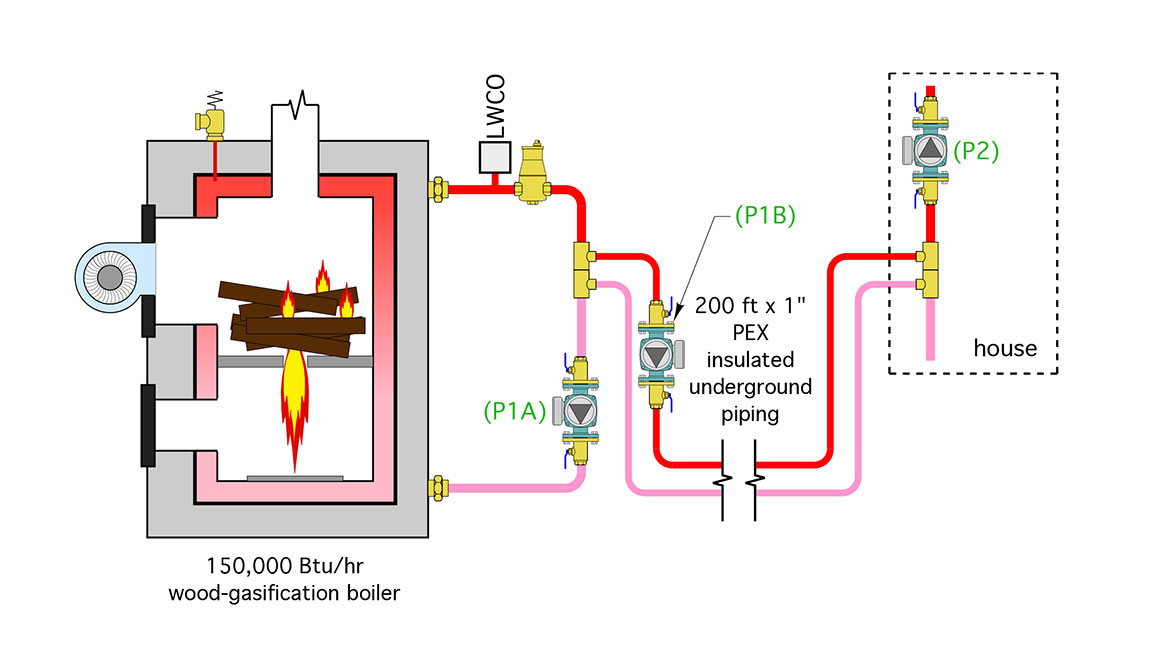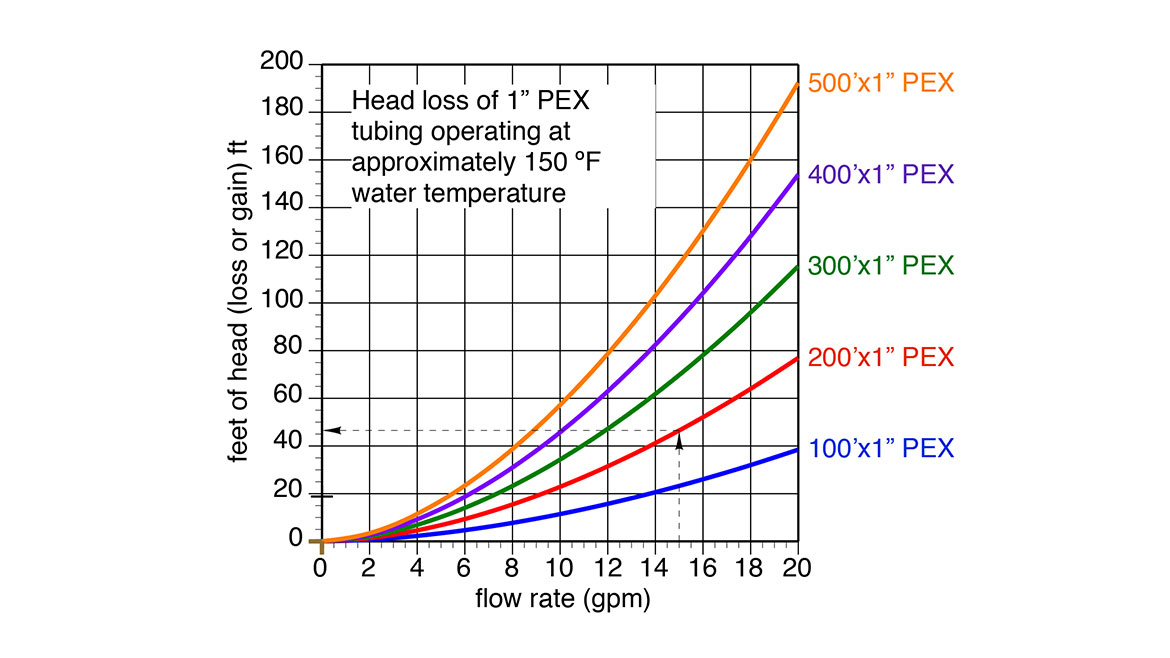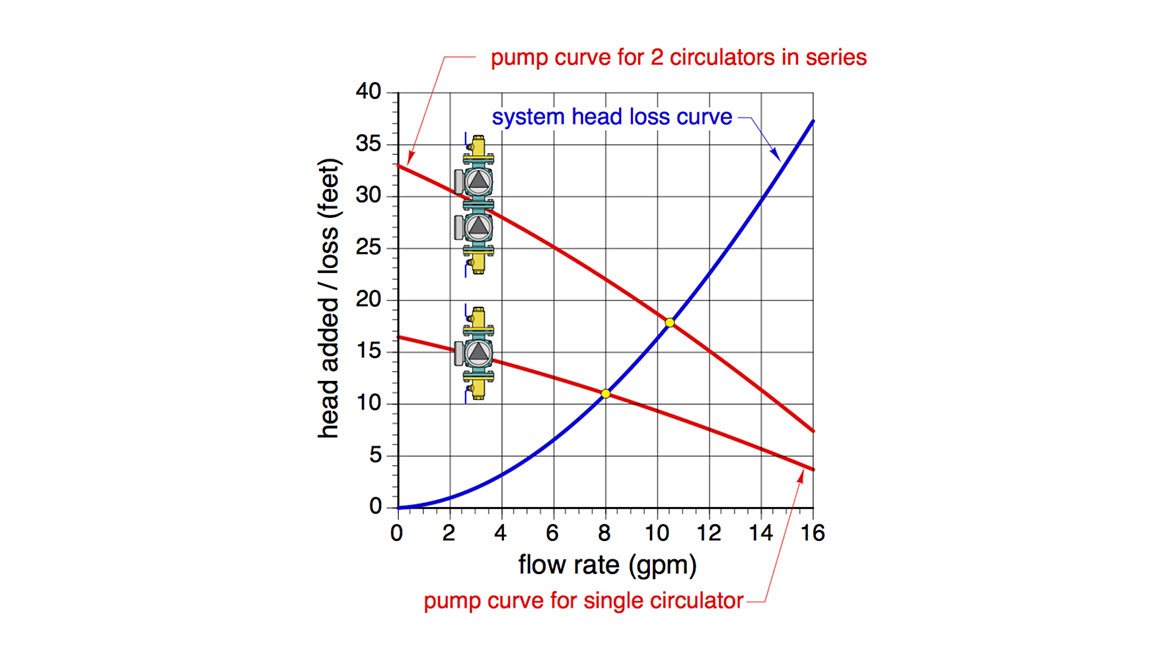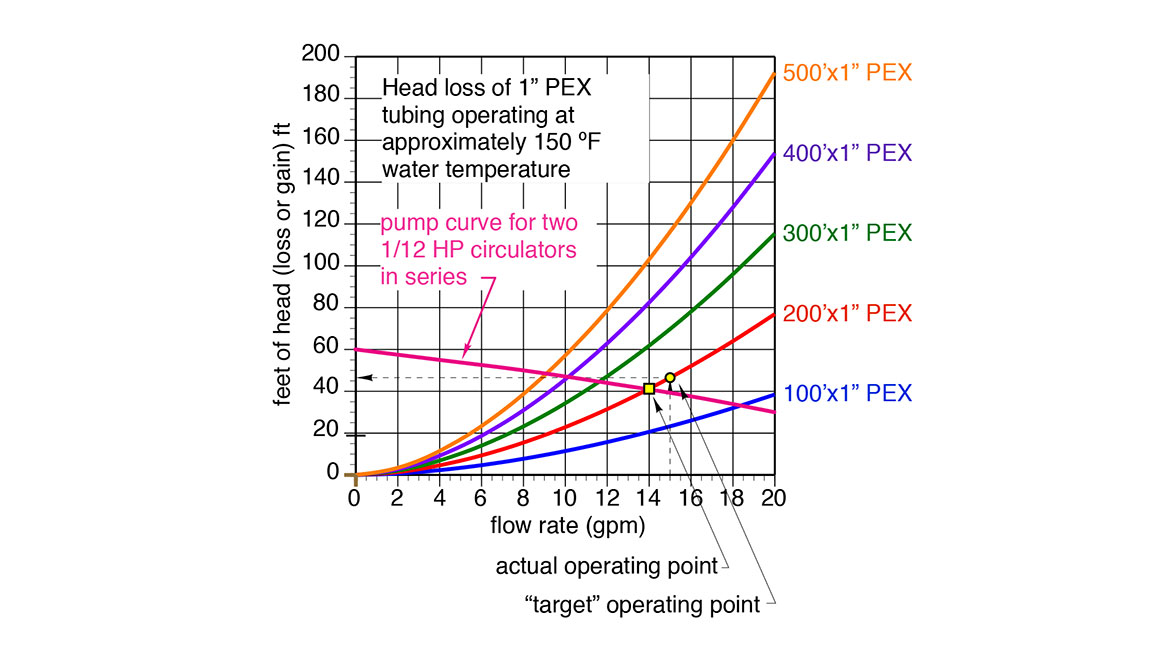The Glitch & The Fix: Boiler choke point

Figure 1. Image courtesy of John Siegenthaler
The Glitch:
Due to its low efficiency and high emissions, an installer is asked to replace the outdoor wood-fired furnace shown in Figure 1, with a new cordwood gasification boiler.
The new boiler has a rated output of 150,000 Btu/h. The outdoor furnace is located about 100 feet from the indoor mechanical room. Two runs of 1” PEX connect the outdoor furnace with the remainder of the system. Due to existing landscaping, the installer plans to reuse the existing underground piping.
The new “near-boiler” is shown in Figure 2.
FIGURE 2


When the boiler is put into operation its temperature quickly climbs to the high limit setting of 200° F, the combustion fan turns off, and the air shutter closes, leaving a large amount of wood to smolder in the combustion chamber. All the circulators are nominal 1/25 HP and are running fine.
Can you determine why this is happening and propose a correction?
The Fix:
The underlying issue is that heat isn’t being removed from the boiler as fast as it is being produced. That’s why the boiler temperature rises rapidly, causing the high limit controls to close the air damper. Without the proper air supply the fire smolders, creosote forms, and combustion efficiency tanks.
The solution is straightforward for anyone who knows how to determine a circuit flow rate requirement, calculate the corresponding head loss of the circuit, and use a pump curve.
If we assume the boiler needs to operate with a temperature gain of about 20° F at full fire, the necessary water flow rate between the boiler and load is calculated as follows:
flow rate = (150,000Btu/h)/(500x20)=15 gpm
The underground supply and return piping between the new boiler and the building total to about 200 feet. The corresponding head loss of a 200-foot-long circuit of 1” PEX at 15 gpm can be estimated from Figure 3.
FIGURE 3


At 15 gpm flow rate, the head loss is about 46 feet.
Even those who select their circulators based on “what’s on the truck today” know that this is way beyond what a typical 1/25 HP circulator can produce. So, the problem is simply not enough circulator power. The flow rate established by the small 1/25 HP circulator isn’t carrying heat away from the boiler at a rate even close to the rate at which heat is being produced. This is why the boiler temperature quickly climbs to the high limit setting.
From the standpoint of flow, replacing the 1” PEX underground piping with at least 1.25” PEX would be desirable — although obviously costly and disruptive to the landscape. If this is ruled out, the only remaining solution is to use a more powerful circulator that can operate in the vicinity of 15 gpm at 46 feet of head.
There are several commercial scale circulators that could meet this requirement. However, 15 gpm at 46 feet of head represents a “steep” pump curve. One way to achieve steep pump curves is to put two smaller circulators in series. This doubles the head at any flow rate compared to the head available from a single circulator. Figure 4 shows the concept.
FIGURE 4


The “effective” pump curve for two 1/12 HP circulators connected in close-coupled series is shown in Figure 5.
FIGURE 5


Notice that the intersection of the pump curve and the head loss curve for the 200-foot-long circuit of 1” PEX falls at about 14 gpm (shown by the yellow square). This is where the system would reach hydraulic equilibrium if this particular circulator selection was used.
That flow rate is a bit lower than the previously calculated “target” flow rate of 15 gpm. Still, assuming that it’s OK to operate the boiler with a slightly higher temperature rise (e.g., about 21.4° F rather than 20° F), this is an acceptable solution.
The take away: 1/25 HP circulators are great for the typical flow and head requirements of residential zone circuits, but they don’t cut it when trying to stay ahead of a 150,000 Btu/h boiler pumping through a relatively long and undersized piping system.
Looking for a reprint of this article?
From high-res PDFs to custom plaques, order your copy today!









